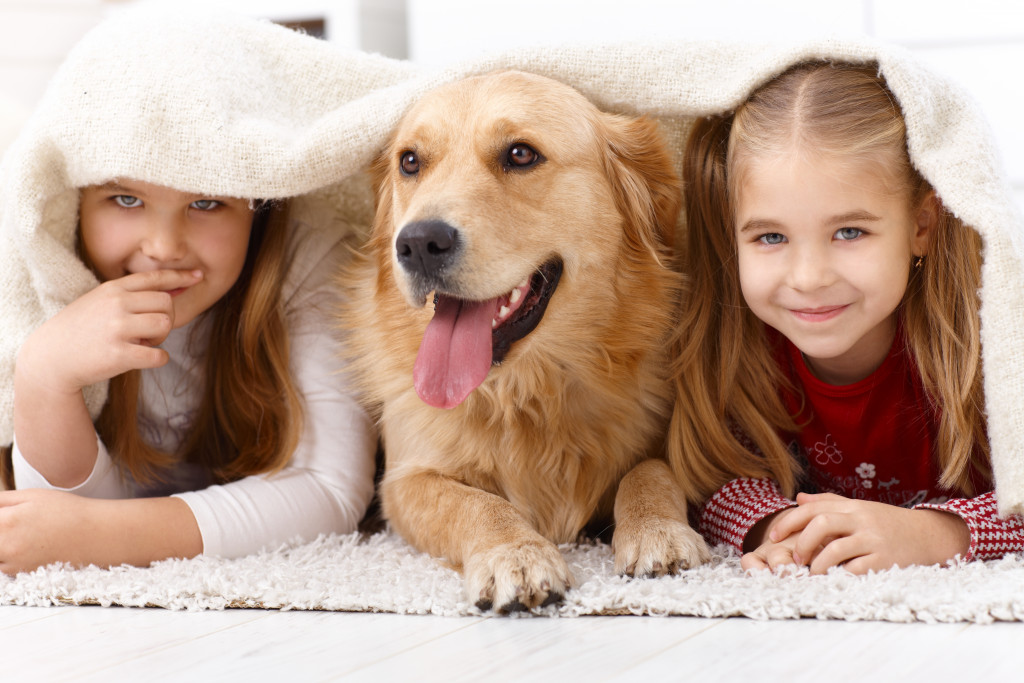- Owning a pet is associated with improved mental and physical health benefits.
- Create an environment that provides enough space for pets to roam freely.
- Provide toys, scratching posts, and other distractions to reduce boredom and destructive behaviors.
- Ensure a clean home environment with regular vacuuming, sweeping, and mopping.
- Set up an indoor pet corner with ample space and pet-safe plants.
Owning a pet can provide numerous benefits, both physical and psychological. Research has found that pet ownership is associated with lower rates of depression, improved self-esteem, and increased emotional well-being. Additionally, interacting with pets has been proven to reduce levels of stress hormones such as cortisol and norepinephrine. This can lead to improved overall mental health and higher quality of life.
Physical benefits such as reduced blood pressure and cholesterol levels are also associated with owning a pet. Studies have shown that people who own dogs are more likely to exercise regularly than those without pets. Regular exercise can improve cardiovascular health, stronger immunity, better sleep patterns, and a healthier weight.
Having a solid connection with an animal has also been linked to other health benefits, such as the decreased risk of allergies and asthma in children who live in households with pets from an early age. The American College of Allergy, Asthma & Immunology states that growing up around animals may help protect children from developing allergies later in life.
If you are a first-time pet owner, you might have to make a few changes to your home to make it a “pet-friendly” haven. Here are a few tips to help you.
Adjusting Home Design

A comfortable home is essential for any pet, especially dogs and cats. To create an environment that gives them the space to relax and play, you must ensure that your layout provides enough room for them to roam freely.
Consider Your Pet’s Needs
The first step in creating a pet-friendly home is considering your pet’s needs when deciding on a layout. What type of activity does your pet enjoy? Do they like running around or prefer more informal activities? Do you plan on buying furniture such as couches or beds? If so, ensure enough room for them to move around without feeling crowded or trapped.
Make Use of Open Spaces
Take advantage of open spaces such as hallways, foyers, and living rooms by creating pathways that allow your pets easy access from one room to another. This will help keep them from feeling confined in their little corner and give them more freedom of movement throughout the house.
Provide Toys and Distractions
Providing toys and other distractions can help keep your pets occupied while you are away or busy with other tasks. This can also be helpful if your pet has separation anxiety issues or is prone to destructive behavior when left alone. Toys should be rotated regularly to prevent boredom, but make sure they are age-appropriate and safe for your pet. Also, consider providing scratching posts or other items designed specifically for cats and dogs to play with or chew on to discourage destructive behaviors caused by boredom or stress.
Keep It Clean
Maintaining a clean environment is essential to protect your pet’s health and safety and the longevity of your furniture and floors. Vacuum carpets regularly, sweep floors often, mop up messes quickly, launder bedding weekly, wash dishes daily, and change litter boxes at least once per week (more often if necessary). Additionally, you must place rugs where liquids can be spilled easily, such as near water dishes or cat litter boxes, for easier cleanup.
Creating a Healthy Outdoor Space

The outdoor area should not be overlooked when making a home pet-friendly. Creating a safe, healthy environment for your pet to enjoy can give them a great source of exercise and an opportunity to explore the environment and bond with their owners.
To ensure your pet is safe and comfortable outdoors, consider investing in irrigation systems for the lawn. This will ensure that your pet has access to water and help keep the grass from becoming overgrown or dried out, reducing their risk of exposure to potential parasites or allergens. Additionally, it’s essential to check for any hazardous plants in the area, such as poison ivy or various species of mushrooms, which can be dangerous if ingested. Please make sure you are familiar with what kinds of plants are native to your area so you can correctly identify them and remove any that could pose a threat to your pet.
In addition to ensuring the outdoor space is safe, providing toys and areas where they can explore independently is also helpful. A sandbox or raised platform can be an excellent way for cats or small dogs to play without having direct contact with dirt. Additionally, providing toys such as Frisbees and balls can encourage them to stay active while outdoors and improve their overall physical health.
Establishing an Indoor Pet Corner
Designating an indoor pet corner for your furry friends is a great way to keep them relaxed and content. If possible, select a room or area of the house that can be used exclusively for them. Ensure ample space to roam around and enough toys, beds, and other items to make them feel comfortable. Also, consider adding pet-safe plants around the area to provide a natural habitat and release negative ions into the air while they relax or nap.
Final Thoughts
Making your home pet-friendly doesn’t have to be complicated! With just a few simple adjustments, you can create an environment that meets your pet’s needs and provides endless opportunities for fun and relaxation. And who knows? You could end up making many years of loving memories together!

